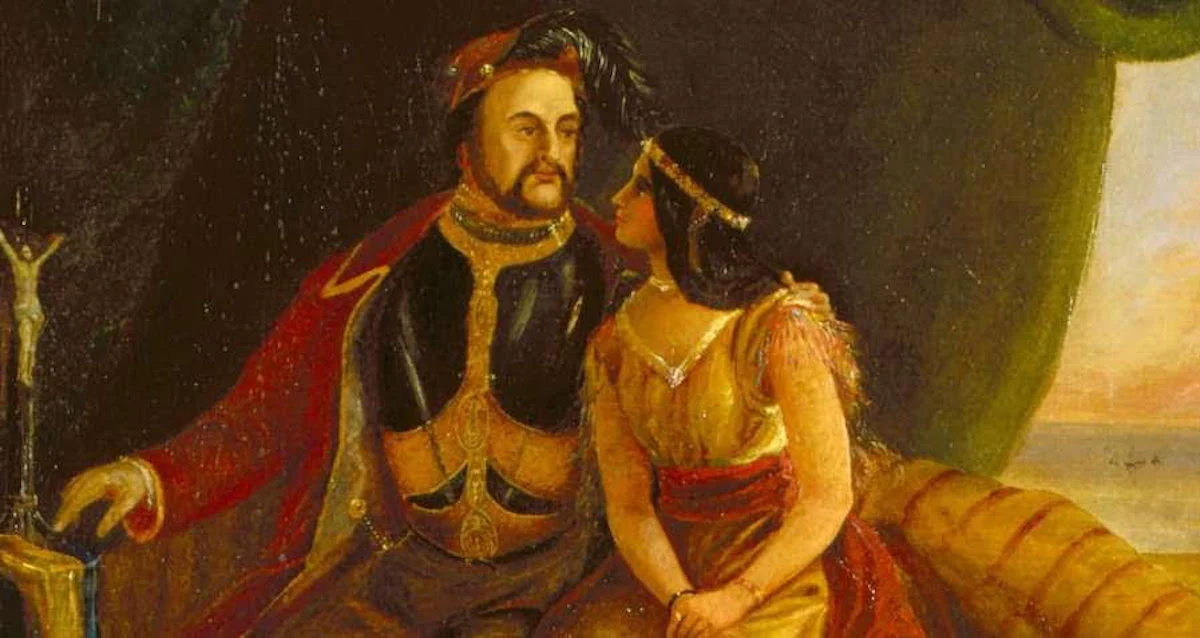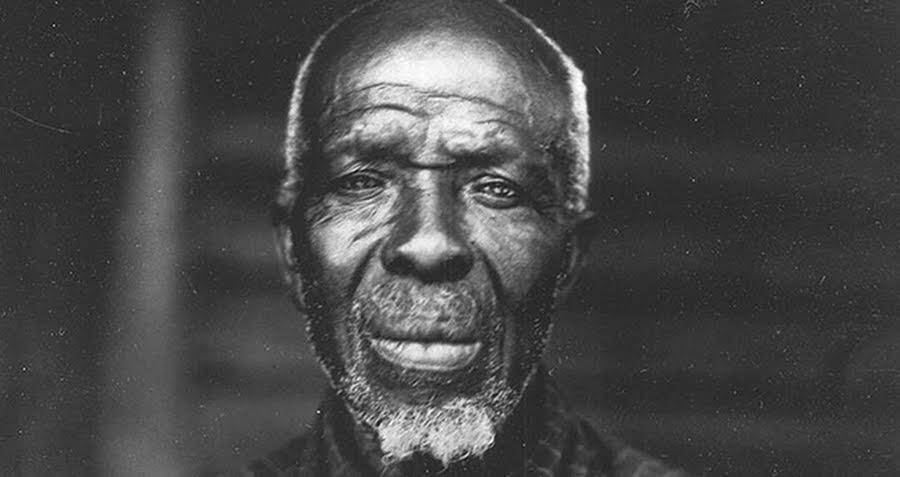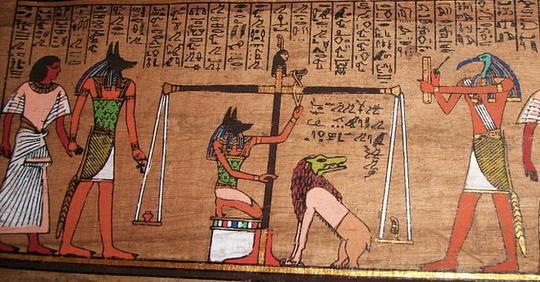Several years after arriving in Jamestown, John Rolfe, an English settler, grappled with matters of the heart. He had developed feelings for Pocahontas, a Native American woman deemed a "heathen" and held captive by his fellow colonists. Despite these challenges, Rolfe ultimately made a monumental decision—to marry Pocahontas, the daughter of Chief Powhatan. This union would forever engrave their relationship in the annals of history.
However, their "love story" was much more intricate than it initially appears. Disney's choice to highlight Pocahontas rescuing John Smith over her marriage to John Rolfe in the 1995 animated film Pocahontas suggests there was complexity to their relationship. Even in the 1998 sequel Pocahontas II, which portrayed John Rolfe as Pocahontas' romantic interest, many artistic liberties were taken with their story.
So, who exactly was John Rolfe? How did his life intersect with Pocahontas, and what were the genuine dynamics of their relationship? Here's a comprehensive look at the man who became Pocahontas' husband.
John Rolfe's Tumultuous Voyage To The New World
Their "love story" was more nuanced than commonly portrayed. Disney's focus on Pocahontas rescuing John Smith in the 1995 film Pocahontas, rather than her marriage to John Rolfe, underscores this complexity. Even the 1998 sequel Pocahontas II took considerable liberties with their relationship, portraying John Rolfe as Pocahontas' love interest.
Who was John Rolfe, and how did he intersect with Pocahontas? What were the true dynamics of their relationship? Here's a detailed exploration of the man who became Pocahontas' husband.
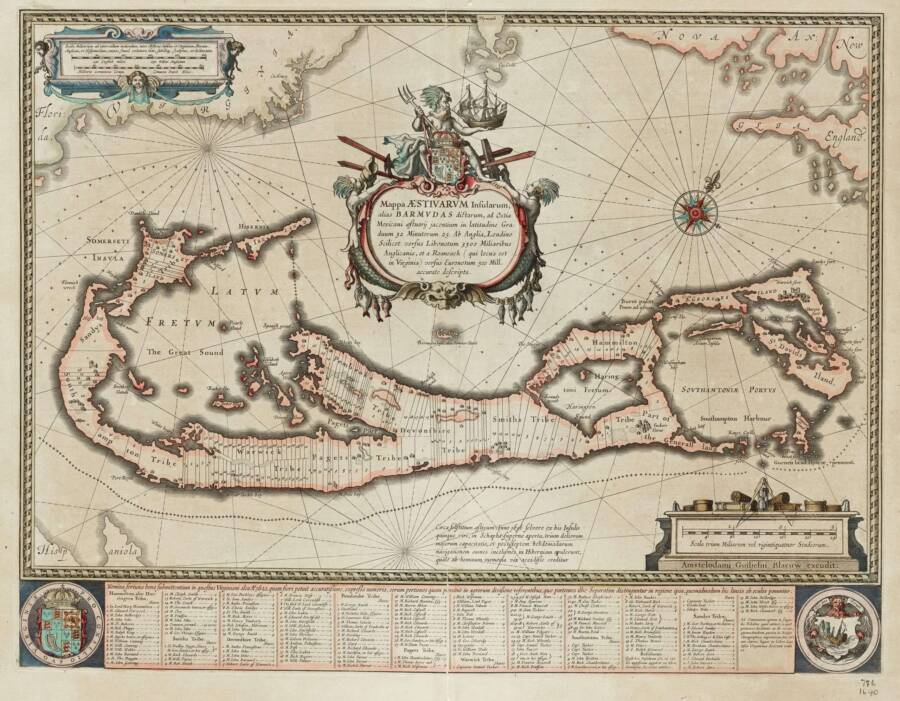
"For foure and twenty houres the storme in a restlesse tumult, had blowne so exceedingly, as we could not apprehend in our imaginations any possibility of greater violence, yet did wee still finde it, not onely more terrible, but more constant, fury added to fury, and one storme urging a second more outragious then the former," wrote passenger William Strachey, the future secretary of the Virginia colony.
The shipwreck of the Sea Venture proved fortuitous for its passengers. Rolfe and fellow survivors thrived in Bermuda, benefiting from its abundant food supply. Meanwhile, those who reached Virginia during the Starving Time faced severe hardship, with a significant loss of life among the English settlers due to starvation.
However, Rolfe experienced personal tragedy during his time on the island. His wife, Sarah, gave birth to a daughter named Bermuda, but both mother and child succumbed shortly afterward, highlighting the harsh realities of life in Bermuda.
By the spring of 1610, the survivors of the Sea Venture were prepared to resume their journey to Virginia. Crafting two ships, the Patience and the Deliverance, from island cedar and salvaged materials, they sailed for about 10 days before reaching the Chesapeake Bay and finally arriving at Jamestown.
In the Virginia colony, John Rolfe quickly made a name for himself through his pioneering experiments with tobacco. Credited as the first colonist to successfully cultivate tobacco seeds in the region, which he acquired from the Caribbean, Rolfe's efforts were praised for producing a crop that was "pleasant, sweete and strong."
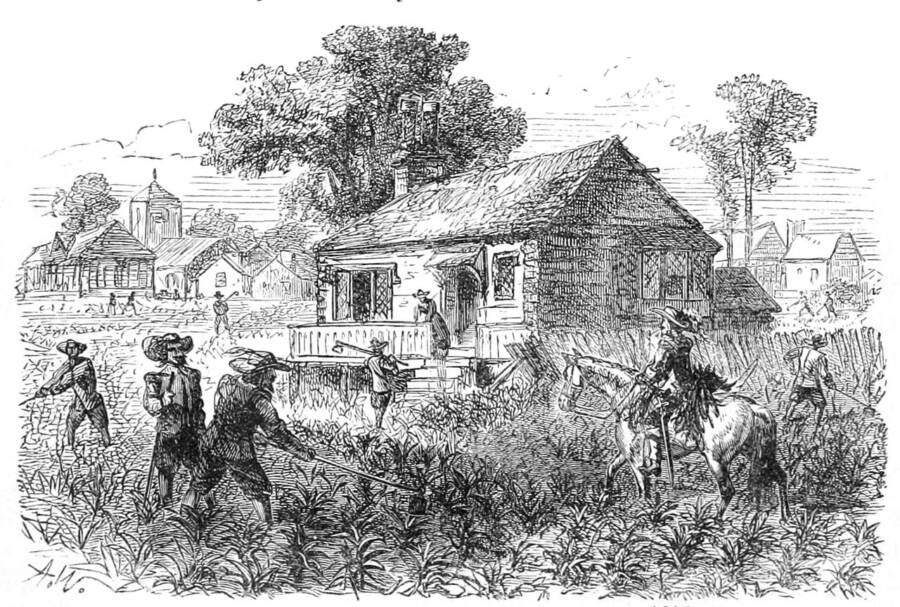
However, Rolfe's legacy extends beyond tobacco cultivation. He is primarily remembered for his marriage to Pocahontas, a Powhatan Native American woman.
The Controversial "Love" Story Of John Rolfe And Pocahontas
The relationship between the English colonists and the Powhatan people began before John Rolfe's arrival. In 1607, shortly after Jamestown's establishment, John Smith, a colonist, was captured by the tribe. He was taken from town to town and eventually brought before Chief Powhatan, the tribe's leader.
Smith recounted being placed before the chief and facing imminent death, only to be spared by an unexpected savior: Powhatan's 11-year-old daughter, Pocahontas. However, modern interpretations suggest Smith may have misunderstood a tribal adoption ritual as a threat. Nevertheless, this encounter marked the beginning of relations between the Powhatan and the English colonists.
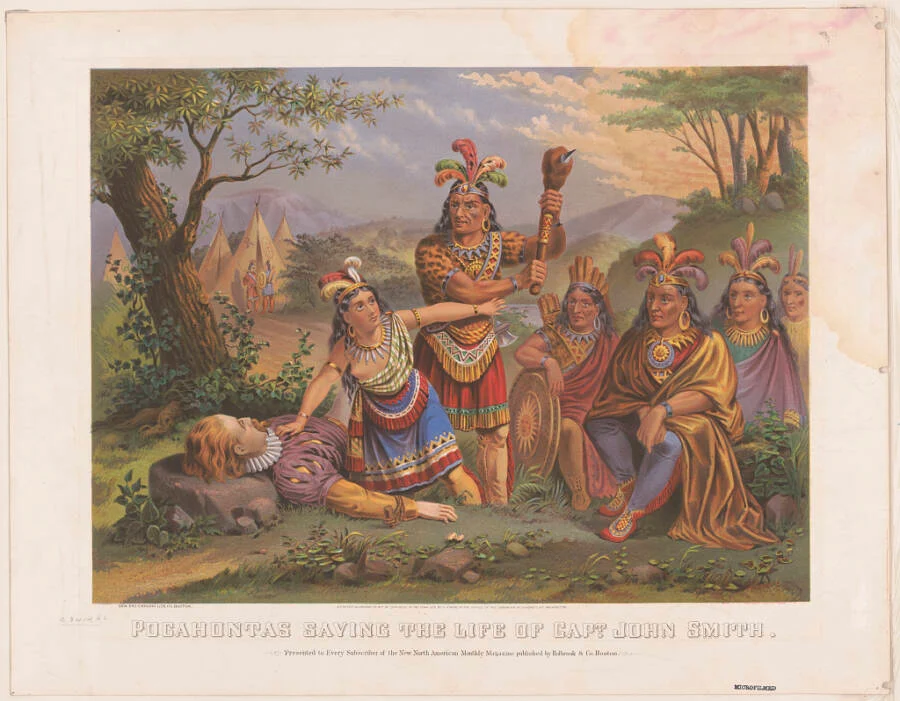
Upon John Rolfe's arrival in 1610, relations between the English colonists and the Powhatan tribe had deteriorated, exacerbated by the settlers' increasing demands for supplies from the Powhatans. In 1613, Captain Samuel Argall devised a plan to kidnap the chief's daughter as a means to leverage negotiations.
Pocahontas, then approximately 17 years old, was seized and taken to Jamestown. According to some tribal oral traditions, during her captivity, she was allegedly raped by an unnamed colonist and became pregnant against her will, a story purportedly relayed to her sister, Mattachanna, as documented by the National Park Service. English accounts, however, depict a different narrative where Pocahontas peacefully learned English, converted to Christianity, and eventually adopted the name "Rebecca."
It was during this period that Pocahontas encountered John Rolfe. Rolfe soon developed a strong desire to marry her, a sentiment he expressed at length in a letter to colonial governor Thomas Dale in 1614.
"[It is to Pocahontas] to whom my hearty and best thoughts are, and have a long time been so entangled," Rolfe wrote, "and enthralled in so intricate a labyrinth, that I was even awearied to unwind myself thereout."
Yet, questions linger about Rolfe's motives for pursuing marriage with Pocahontas. According to the National Park Service, his decision may have been influenced by practical considerations such as enhancing his tobacco cultivation through alliances with Indigenous leaders overseeing tobacco production. In his letter to Dale, Rolfe asserted that his intentions were not driven solely by romantic passion but rather aimed at advancing the interests of the plantation, honoring his country, and glorifying God.
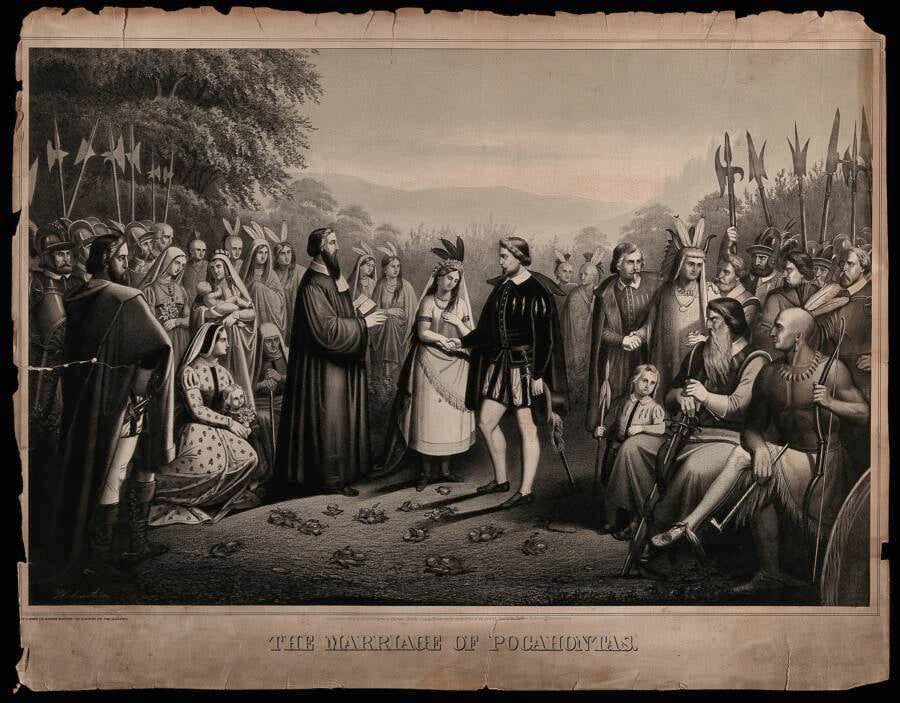
Pocahontas and John Rolfe were married on April 5, 1614. However, it remains unclear whether Pocahontas or her father truly consented to the marriage, given her status as a captive, which likely constrained their freedom to refuse.
Despite the uncertain circumstances of their union, the marriage of John Rolfe and Pocahontas marked a period of relative peace between the English colonists and the Powhatan people. However, their time together would be tragically brief.
Pocahontas' Mysterious Death In England
During their marriage, Pocahontas bore a son named Thomas Rolfe. English records indicate that Thomas was born after Pocahontas married John Rolfe, but oral traditions from tribal sources suggest he was born before their wedding.
In 1616, the Virginia Company of London, which financed Jamestown's establishment, sponsored John Rolfe, Pocahontas, and their son Thomas to travel to England. The company intended to showcase Pocahontas as an example of the colony's success in "civilizing" an Indigenous person, presenting her as a "tamed savage" and a Powhatan "princess," despite the cultural nuances. Sadly, Pocahontas would never return to her homeland.
Initially, their journey to England appeared successful. John Rolfe and Pocahontas, now known as "Lady Rebecca Rolfe," toured the country for several months. Pocahontas was introduced at the court of King James I and attended social events like masques, where she and Rolfe were seated near the king and Queen Anne.
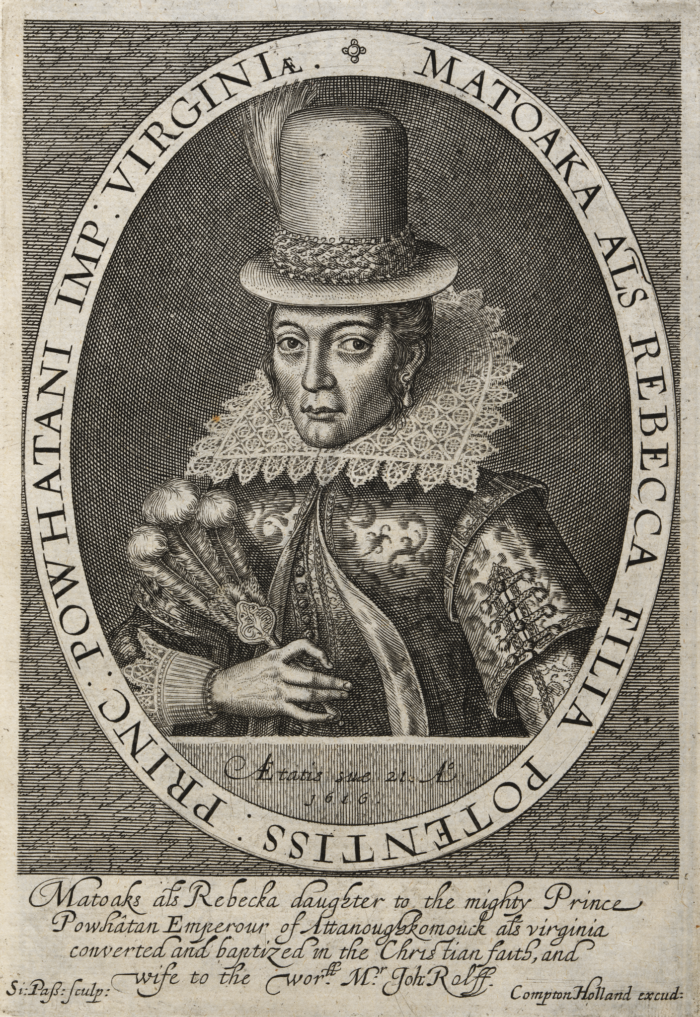
As the young family prepared to sail back to Virginia, tragedy struck. In March 1617, during their voyage, Pocahontas suddenly fell seriously ill and passed away at around the age of 21. She was laid to rest in Gravesend, England, near St. George's Church. The cause of her death remains unknown.
The exact circumstances surrounding Pocahontas' death, including speculation of illness such as smallpox or dysentery, or even poisoning due to the rapid onset of her illness, remain a mystery. Despite various theories, the truth behind her untimely demise may never be definitively established.
Following Pocahontas' death, John Rolfe found himself widowed for the second time. Concerned for his son Thomas, who also fell ill but recovered, John entrusted the boy to a relative in England and returned to Virginia alone. Unfortunately, Thomas would never reunite with his father.
John Rolfe's Final Years In The New World
Back in Virginia, John Rolfe immersed himself in the colony's development. He served as a councilor, member of the House of Burgesses, and continued to innovate in tobacco cultivation. The export of Virginia tobacco to England soared; in 1617, exports reached 20,000 pounds, more than doubling the following year.
Additionally, John Rolfe remarried, this time to Jane Pierce (also spelled Pearce), daughter of Captain William Pierce, marking his third marriage and furthering his connections within the colony and beyond.
Despite John Rolfe's apparent personal and professional success, tensions in the New World were escalating. The peace brokered by Rolfe and Pocahontas' marriage between Indigenous peoples and colonists began to deteriorate, especially following the death of Pocahontas' father in 1618. Many Indigenous tribes resisted the colonists' relentless land demands necessary for growing Rolfe's tobacco.
In 1622, under the leadership of Chief Powhatan's successor, Opechankeno, the Algonquian people launched a devastating attack on the colonists. This assault resulted in the deaths of approximately 350 to 400 people, constituting a significant blow to the settler population, amounting to 25 percent.
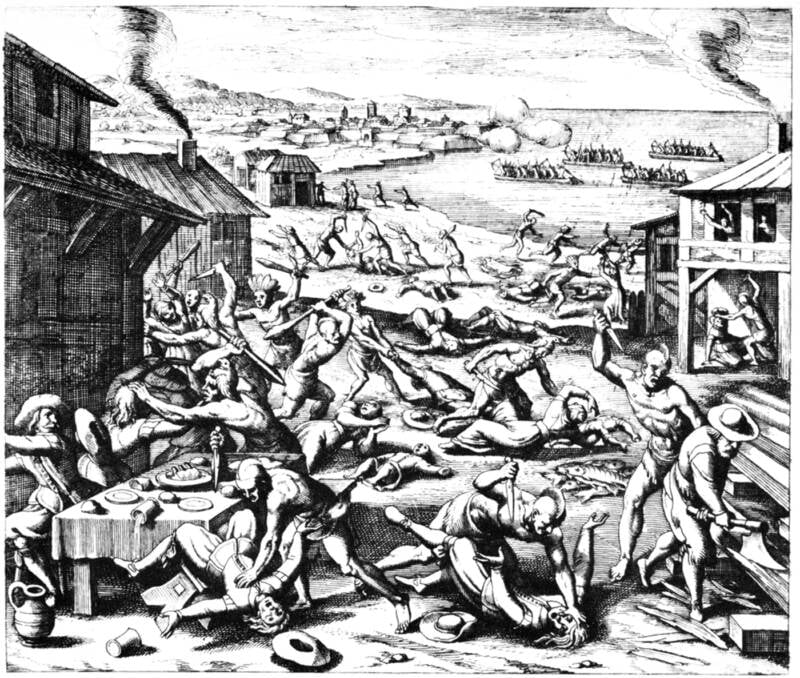
John Rolfe passed away the same year, around the age of 37. It remains unclear whether he perished in the massacre or succumbed to other causes.
The aftermath of this massacre, along with complexities in Rolfe and Pocahontas' relationship, prompted Mike Gabriel, director of the 1995 Disney film Pocahontas, to omit Rolfe from the narrative entirely. Gabriel explained that the intricacies and violence associated with Rolfe and Pocahontas' story were deemed unsuitable for a youthful audience.
John Rolfe did appear in the direct-to-video sequel Pocahontas II, released in 1998. The film depicts Pocahontas and John Rolfe traveling to England to prevent war between the Powhatan people and the English. During their challenging journey, they gradually develop romantic feelings and share a heartfelt kiss on their return to Jamestown. This portrayal contrasts sharply with the complexities of Pocahontas' real-life experiences.
Pocahontas' life bore little resemblance to a Disney fairy tale. She endured kidnapping, captivity for about a year, potential assault, and a marriage possibly driven more by colonial interests in tobacco than by genuine affection. Her journey to England involved being exhibited before curious crowds and may have tragically ended in her untimely death before she could return home.
The true details of Pocahontas' life remain elusive as she left no written accounts of her own. Similarly, John Rolfe's motivations for marrying Pocahontas are obscured by the passage of time. Was his decision rooted in love, practical business acumen, or a desire to benefit the Virginia plantation as he asserted?
Ultimately, only John Rolfe and Pocahontas themselves knew the full truth behind their relationship and decisions.
